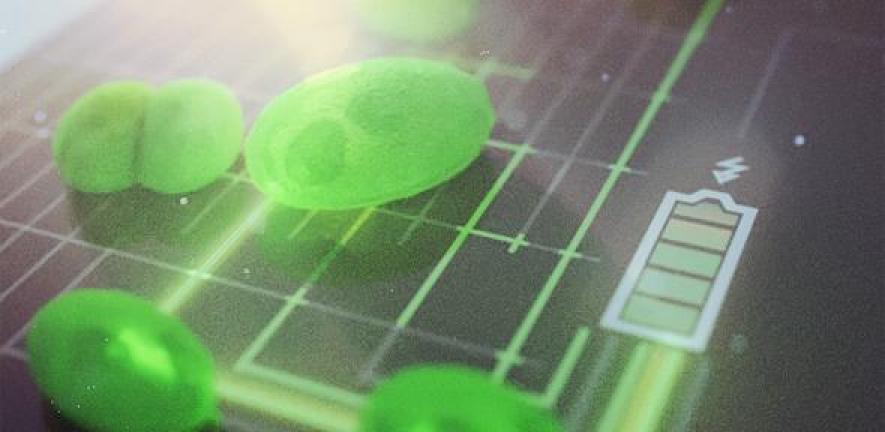
The research was done in collaboration with researchers from the departments of Biochemistry and Physics.
In recent years, biological solar cells, more commonly known as biophotovoltaics or BPVs, have emerged as an environmentally-friendly and low-cost alternative to synthetic photovoltaic devices for harvesting solar energy and converting it into electrical current. BPVs utilise the photosynthetic properties of microorganisms such as algae to convert light into electric current that can be used to provide electricity.
During photosynthesis, algae produce electrons, some of which are exported outside the cell where they can provide electric current to power devices. To date, all the BPVs demonstrated have located charging (light harvesting and electron generation) and power delivery (transfer to the electrical circuit) in a single compartment; the electrons generate current as soon as they have been secreted.
But in research published in the journal Nature Energy, the scientists describe how they designed a two-chamber BPV. The two chambers separate the two core processes involved in a solar cell – generation of electrons, and their conversion to power - thus optimising the cell’s efficiency.
“Charging and power delivery often have conflicting requirements,” explains Kadi Liis Saar, who is a postgraduate student in Professor Knowles’ research group. “For example, the charging unit needs to be exposed to sunlight to allow efficient charging, whereas the power delivery part does not require exposure to light but should be effective at converting the electrons to current with minimal losses.”
“Separating out charging and power delivery meant we were able to enhance the performance of the power delivery unit through miniaturisation,” explains Professor Knowles. “At miniature scales, fluids behave very differently, enabling us to design cells that are more efficient, with lower internal resistance and decreased electrical losses.”
The team used algae that had been genetically modified to carry mutations that enable the cells to minimise the amount of electric charge dissipated non-productively during photosynthesis. Together with the new design, this enabled the researchers to build a biophotovoltaic cell with a power density of 0.5 W/m2, five times that of their previous design. While this is still only around a tenth of the power density provided by conventional solar fuel cells, these new BPVs have several attractive features, they say.
Separating the energy generation and storage components has other advantages, too, say the researchers. The charge can be stored, rather than having to be used immediately – meaning that the charge could be generated during daylight and then used at night-time.
While algae-powered fuel cells are unlikely to generate enough electricity to power a grid system, they may be particularly useful in areas such as rural Africa, where sunlight is in abundance but there is no existing electric grid system. In addition, whereas semiconductor-based synthetic photovoltaics are usually produced in dedicated facilities away from where they are used, the production of BPVs could be carried out directly by the local community, say the researchers.
For a fuller version of this article, please see the University of Cambridge Research pages article: Harnessing the power of algae: new, greener fuel cells move step closer to reality.
Reference
Saar, KL et al. Enhancing power density of biophotovoltaics by decoupling storage and power delivery. Nature Energy; 9 Jan 2018; DOI: 10.1038/s41560-017-0073-0

